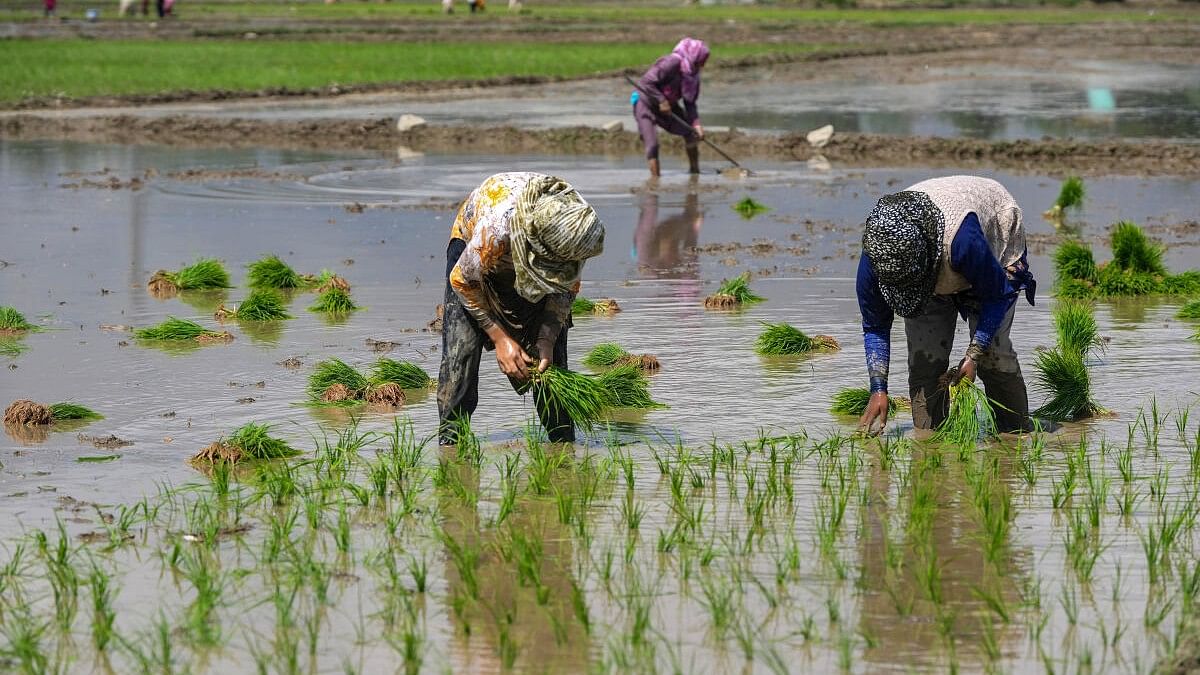
Representative image.
Credit: PTI Photo
With "Mushkbudji" getting Geographical Indication (GI) Tag, around 2000 farmers in south Kashmir’s Anantnag district have started cultivating the aromatic rice, which is giving them high returns.
Pertinently, GI is a form of Intellectual Property right that identifies goods originating from a specific geographical location and having distinct nature, quality and characteristics linked to that location.
In February this year, Mushkbudji rice was among nine products from Jammu and Kashmir to get GI tag. Mushkbudji is short, bold aromatic rice grown in the higher reaches of Kashmir. The cooked rice is unique and possesses a harmonious blend of taste, aroma and rich organoleptic properties.
It is mainly grown in areas of Sagam, Panzgam, and Soaf Shali of district Anantnag and Beerwah belt of district Budgam. The consumption of aromatic rice in Kashmir has now been limited to special occasions like marriages and festivals due to its low availability and high cost. The average cost of aromatic rice is Rs 400-500 per kg.
J&K Agriculture Director Chaudhary Muhamad Iqbal believes that the GI tag to the Mushkbudji will transform the farmers into entrepreneurs. “I can say with conviction that the future of the farmers associated with this variety of rice is bright,” he said, and added that the increased production of the niche crop will result in more employment.
While at the moment the aromatic rice is cultivated on 625 acres of land in Kashmir, Iqbal believes, in coming years it will reach 1250 acres. “We are also trying to expand its growth in other parts of the valley,” he said.
In 2007, the government announced a revival program of the Mushkbudji rice variety in Sagam village of Kokernag. This precious and aromatic variety had fallen out of cultivation in the 1970s due to blast disease.
Drawn by its unique qualities and the prospect of higher revenues, more and more farmers have started cultivating this fragrant variety on their lands.